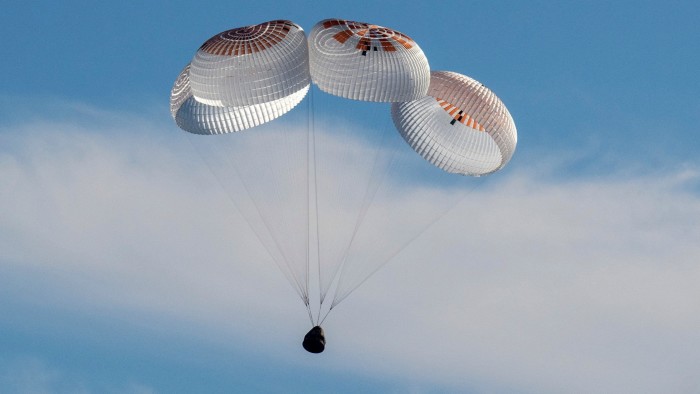More than half a century after the last pair of human footprints were left in the lunar dust, humanity is poised for a monumental return. NASA, the agency that defined the pinnacle of human achievement with the Apollo program, is once again setting its sights on the Moon. This ambitious new chapter in space exploration is named Artemis, a multi-faceted, international endeavor designed not just to revisit our celestial neighbor, but to establish a sustainable, long-term human presence there. This is not a repeat of the past; it is the foundational step toward becoming a multi-planetary species, using the Moon as a crucial proving ground for the even greater leap to Mars.
The Artemis program represents a fundamental shift in the philosophy of space exploration. Where Apollo was a sprint fueled by geopolitical competition, Artemis is a marathon built on global collaboration and commercial partnership. Its goals are as audacious as they are inspiring: to land the first woman and the first person of color on the lunar surface, to unlock the scientific secrets held within the Moon’s permanently shadowed craters, and to build the infrastructure that will support a permanent human outpost. This comprehensive article delves into the core components of the Artemis program, exploring the groundbreaking technology, the ambitious scientific objectives, and the long-term vision that will define humanity’s future in the cosmos.
The Artemis Program: A New Era of Lunar Exploration
Named after the twin sister of Apollo in Greek mythology, the Artemis program is NASA’s strategic framework for returning astronauts to the Moon. It is far more than a series of missions; it is a comprehensive architecture for deep space exploration, integrating new technologies, commercial capabilities, and international cooperation on an unprecedented scale. The program’s core mandate is to move beyond the short “flags and footprints” sorties of the Apollo era and build a sustainable presence that can serve as a launchpad for future missions to Mars and beyond.
The Three-Pillar Mission Structure
The initial phase of the program is structured around a series of increasingly complex missions, each designed to test and validate the systems required for a human landing and long-duration stays.
- Artemis I: Successfully completed in late 2022, Artemis I was an uncrewed, 25-day test flight. It saw the maiden voyage of the powerful Space Launch System (SLS) rocket, which sent the Orion spacecraft on a journey thousands of miles beyond the Moon and back. The mission’s primary goal was to test the integrated system in a deep space environment, particularly focusing on Orion’s heat shield during a high-speed reentry into Earth’s atmosphere. Its success was a critical validation of the foundational hardware.
- Artemis II: Scheduled for the near future, Artemis II will be the first crewed mission of the program. A crew of four astronauts will board the Orion spacecraft for a lunar flyby mission, venturing farther from Earth than any human in history. They will not land, but will instead perform a series of maneuvers to test Orion’s life support systems, navigation, and communication capabilities with a human crew in deep space. This mission will be the final crewed checkout before a landing is attempted.
- Artemis III: This is the historic mission that will return humans to the lunar surface. After launching on the SLS and traveling to the Moon in Orion, two astronauts will transfer to a Human Landing System (HLS) for the final descent. Their destination is the lunar south polar region, a scientifically rich area believed to contain water ice in its permanently shadowed craters.
International and Commercial Partnerships: The New Space Race
Unlike the nationally focused Apollo program, Artemis is defined by collaboration. The Artemis Accords are a set of principles signed by dozens of nations, establishing a common framework for the peaceful and transparent exploration of space. International partners like the European Space Agency (ESA), the Japan Aerospace Exploration Agency (JAXA), and the Canadian Space Agency (CSA) are contributing critical hardware and expertise, from the Orion Service Module to components for the Lunar Gateway.
Equally important is the deep integration of the commercial space industry. NASA is leveraging the innovation and cost-effectiveness of private companies to develop key systems. This approach fosters competition, drives technological advancement, and helps build a robust commercial space economy. The most prominent example is the selection of SpaceX to develop the first Human Landing System, a critical component for the Artemis III mission.

The Technology Powering the Return
Returning to the Moon requires a new generation of hardware designed for reliability, reusability, and long-duration missions far from Earth. The Artemis architecture is built upon several key technological pillars.
The Space Launch System (SLS): The World’s Most Powerful Rocket
The SLS is the super heavy-lift launch vehicle that serves as the backbone of the Artemis program. Standing taller than the Statue of Liberty, it is the only rocket capable of sending the Orion spacecraft, astronauts, and large cargo to the Moon on a single mission. In its initial configuration, the SLS can generate 8.8 million pounds of thrust at liftoff, 15% more than the Saturn V rocket of the Apollo era. Future evolved blocks of the rocket will provide even greater lift capacity, enabling the transport of large habitats and hardware for the Artemis Base Camp.
The Orion Spacecraft: Humanity’s Deep Space Vehicle
Orion is the state-of-the-art exploration spacecraft designed to carry astronauts on long-duration missions into deep space. It consists of two main parts: the Crew Module, which can support four astronauts for up to 21 days, and the European Service Module (ESM), which provides propulsion, power, thermal control, and life support. Orion is equipped with advanced life support and radiation protection systems, making it a far more capable and resilient vehicle than the Apollo Command Module. Its ability to sustain crews far from home is essential for both lunar missions and the eventual journey to Mars.
The Lunar Gateway: A Staging Post in Lunar Orbit
Perhaps the most visionary component of the Artemis architecture is the Lunar Gateway. This will be a small space station in orbit around the Moon, serving as a multi-purpose outpost. The Gateway will provide a command and control center, a science laboratory, a short-term habitat, and a docking port for both Orion and lunar landers. Its unique orbit will provide unprecedented access to the entire lunar surface, especially the polar regions. The Gateway is a critical piece of infrastructure for establishing sustainability, allowing missions to be staged from lunar orbit rather than launching everything directly from Earth. It will be assembled in space over several missions and is a key international collaboration.
“With the Artemis program, we are going to the Moon in a way we’ve never gone before. We’re going with international and commercial partners, and we’re going to stay. This time, when we go to the Moon, we’re going to establish a permanent human presence.” – Bill Nelson, NASA Administrator
Human Landing Systems (HLS): The Ride to the Surface

To get from lunar orbit to the surface, astronauts will use a dedicated Human Landing System. In a departure from the government-developed Apollo Lunar Module, NASA has contracted with commercial partners to develop these landers. SpaceX was selected to provide the first HLS, a variant of its massive Starship vehicle. To ensure redundancy and competition, NASA later awarded a contract to a team led by Blue Origin for a second lander. These advanced, often reusable systems are designed to carry more crew and cargo than the Apollo lander, enabling longer and more scientifically productive surface missions.
More Than Flags and Footprints: Science and Sustainability
The scientific and strategic goals of Artemis are profoundly different from those of Apollo. The focus is on long-term discovery and creating a self-sustaining model for human exploration.
Key Scientific Objectives
The choice of the lunar south pole as the landing site for Artemis III is driven by science. This region is home to permanently shadowed craters where temperatures are among the coldest in the solar system. Scientists believe these craters hold vast quantities of water ice that have been preserved for billions of years.

- In-Situ Resource Utilization (ISRU): The ability to access and utilize lunar water is a game-changer. Water can be broken down into hydrogen and oxygen, providing breathable air for astronauts and the two primary components of rocket propellant. Mastering ISRU means future missions could refuel on the Moon, dramatically reducing the mass that needs to be launched from Earth and making interplanetary travel more feasible.
- Lunar Geology and History: The ice in these craters is a pristine record of the solar system’s history, potentially containing clues about the delivery of water and organic compounds to the early Earth. Astronauts will collect samples that could rewrite our understanding of planetary formation.
- Astronomy and Heliophysics: The Moon, with no atmosphere and a stable surface, is an ideal platform for astronomy. Telescopes placed on the lunar surface could observe the universe in wavelengths blocked by Earth’s atmosphere.
Artemis Base Camp and the Path to Mars
The ultimate goal on the Moon is to establish the Artemis Base Camp. This permanent outpost would include a modern lunar habitat, a power grid, and advanced rovers like the Lunar Terrain Vehicle (LTV) for extended exploration. This long-term presence will allow astronauts to learn how to live and work on another world for extended periods.
Every aspect of the Artemis program is designed with Mars in mind. The Moon provides a relatively close (a three-day journey) and realistic environment to test the systems and operational procedures needed for a multi-year mission to the Red Planet. This includes testing advanced life support, radiation shielding, ISRU technologies, and strategies for dealing with the psychological challenges of deep space missions. The Gateway could one day serve as the assembly point and departure port for the first human missions to Mars.
Conclusion: The Dawn of a New Lunar Era
NASA’s return to the Moon through the Artemis program is one of the most ambitious and exciting endeavors in the history of human exploration. It is a mission that transcends the simple act of landing on another world; it is about building a permanent foothold in the cosmos. By leveraging international collaboration, fostering commercial innovation, and pursuing groundbreaking science, Artemis aims to create a sustainable blueprint for humanity’s future in space.
The challenges are immense—technical hurdles, budgetary constraints, and the inherent dangers of space travel remain. Yet, the vision is clear. The footprints left by the Artemis astronauts will not be the end of a journey, but the beginning of a new one. They will mark the start of a permanent human presence on the Moon and the first concrete steps on the long road to Mars, securing a future where humanity’s reach extends far beyond our home planet.













